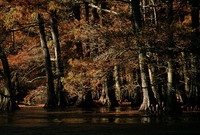Login form
North Carolina

North Carolina is named in honor of two English kings: Charles I and Charles II. Carolinus is a Latin word that means “of Charles.” At first, the English founded one big colony called Carolina. Later, the colony split into North Carolina and South Carolina.
On November 21, 1789, North Carolina became the 12th state to join the United States. Today, more than 8 million people live there. North Carolina is one of the country’s fastest-growing states. The capital of North Carolina is Raleigh. Charlotte is the biggest city.
|
Facts About North Carolina |
|
|
|
|
|
Capital |
Raleigh |
|
Population |
8,410,000 people |
|
Rank among states in population |
11th |
|
Major cities |
Charlotte, Raleigh, Greensboro |
|
Area |
53,800 square miles |
|
Rank among states in area |
29th |
|
Statehood |
November 21, 1789, the 12th state |
|
State nickname |
The Tar Heel State |
|
Name for residents |
North Carolinians |
|
State bird |
Cardinal |
|
State flower |
Flowering Dogwood |
|
State tree |
Southern Pine |
|
Abbreviation |
NC |
LOWLANDS TO HIGHLANDS
North Carolina lies along the Atlantic Ocean in the southeastern United States. Islands, reefs, and sandbars lie just off the coast. Swamps and marshes cover some coastal areas. In other areas, low sand dunes meet the sea. From the coast, the state gradually rises toward the west.
Rolling hills cut by many swift streams cover the middle of the state. The hills rise gradually up to mountains in western North Carolina. First are the scenic Blue Ridge Mountains. Farther west, on the border with Tennessee, stand the Great Smoky Mountains. Here, you’ll find the Great Smoky Mountains National Park, one of the state’s most popular outdoor recreation areas.
In some places in western North Carolina, the mountains are high enough for winter sports. Sugar Mountain attracts many skiers and snowboarders. Mount Mitchell, which rises to 6,684 feet (2,037 meters), is the state’s tallest mountain. In fact, Mount Mitchell is the highest peak in the United States east of the Mississippi River.
OUTER BANKS
Imagine living on a sandbar just a few hundred yards wide. That’s what much of the Outer Banks are like! The Outer Banks are narrow, sandy islands that form an almost continuous barrier between North Carolina’s coast and the Atlantic Ocean.
GRAVEYARD OF THE ATLANTIC
At Cape Hatteras, Cape Lookout, and Cape Fear, the sandbars stick way out into the ocean under water. They make these waters very dangerous for ships. The Diamond Shoals lie just offshore from Cape Hatteras. They have caused many terrible shipwrecks. That’s why this part of the coast is nicknamed the “Graveyard of the Atlantic.”
THE WRIGHT BROTHERS TAKE FLIGHT
Orville and Wilbur Wright tested their first flying machines on North Carolina’s Outer Banks. It was there, in 1903, that they successfully flew an airplane for the first time.
The flight took place at Kill Devil Hills near the town of Kitty Hawk. The brothers picked this site for its steady winds and soft, sandy beaches. Today, you can learn about that first flight at the Wright Brothers National Memorial near Kill Devil Hills.
THE LOST COLONY
The first English settlement in North Carolina ended in failure—and mystery! In 1587, more than 100 English settlers landed on Roanoke Island off North Carolina’s coast. Soon after landing, colony leader John White traveled back to England for supplies. When he returned in 1590, all the settlers had vanished! Even their homes were gone. All he found was the word Croatoan carved into a post.
Where did they go? They may have gone to live with the nearby Croatan Indians. Or maybe they died in a hurricane or from disease. No one knows for sure. The Lost Colony is one of the oldest mysteries in America.
During the summer, you can watch a play about the Lost Colony at the Fort Raleigh National Historic Site. It’s located on the site of the original lost colony.
LAST TO LEAVE THE UNION
In February 1861, the Confederate States of America formed. The Confederacy was a group of states in the South that tried to leave the Union to form their own country. The American Civil War (1861-1865) was fought to hold the nation together.
North Carolina didn’t want to leave the Union. But once the war started, the state decided it couldn’t fight against its own Southern neighbors. So, North Carolina became the last of 11 states to join the Confederacy.
Little fighting took place on North Carolina soil. But the state suffered a great deal. More than 40,000 soldiers from North Carolina died during the Civil War. That’s about one-quarter of all the Confederate soldiers killed. The South lost the war, and North Carolina returned to the Union.
TOBACCO STATE
For many years, growing tobacco was North Carolina’s biggest business. In the late 1400s and early 1500s, European sailors brought tobacco to Europe from the Americas. Tobacco soon became the main crop in the American colonies. Large farms called plantations were built in North Carolina. Slaves brought from Africa worked on the plantations.
Today, North Carolina is still the largest tobacco-producing state in the country. There’s even a town called Tobaccoville, which has the biggest cigarette factory in the world.
But North Carolina now makes many other goods. The state is famous for its furniture and textile factories. It also produces chemicals and electronic goods.
Source: Microsoft ® Encarta

